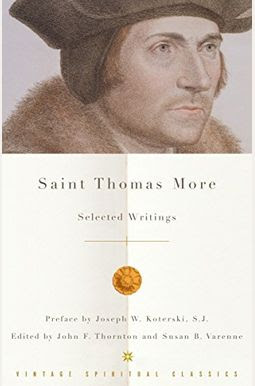So I'll be on the Son Rise Morning Show at my usual time, about 6:50 a.m. Central/7:50 a.m. Eastern on Monday, April 22.
Please listen live here and/or catch the podcast later, as we highlight some insights from "Witnesses of the Resurrection" ("Him God raised up the third day, and showed Him openly; not to all the people, but unto witnesses chosen before of God, even to us who did eat and drink with Him after He rose from the dead." Acts 10:40-41)
To outline the highlights of Newman's argument in this sermon:
1. Jesus knew what He was doing after the Resurrection when He limited His Resurrection appearances to His followers, not appearing in Glory to the crowds or the Pharisees and those who had orchestrated His Crucifixion. They might have been amazed by His re-appearance, but it would not have persuaded them to believe and follow.
2. Jesus prepared those whom He had chosen to witness to His Passion and Resurrection so they'd be ready to spread the Gospel. Their witness, even to martyrdom, "spread the knowledge of Christ's resurrection over the idolatrous world" in a way that no "public exhibition of His resurrection" would have achieved, deeply and lastingly.
3. We need to recognize the wisdom of these events and apply them to our own response to His Resurrection: like the few He instructed before His Ascension, we need to hand on the Faith by our witness and example. We should never grow despondent if we perceive "the prevalence of error" around us, as the history of the Church demonstrates: "It is the consolation of the despised Truth, that its works endure. Its words {292} are few, but they live."
There's good reasons for Newman to explore this topic further, because this a mystery: not one to be solved but one to meditate upon. Before he poses the question, Newman suggests that we might have some mistaken ideas about the Resurrection of Our Lord:
IT might have been expected, that, on our Saviour's rising again from the dead, He would have shown Himself to very great numbers of people, and especially to those who crucified Him; whereas we know from the history, that, far from this being the case, He showed Himself only to chosen witnesses, chiefly His immediate followers; and St. Peter avows this in the text. This seems at first sight strange. We are apt to fancy the resurrection of Christ as some striking visible display of His glory, such as God vouchsafed from time to time to the Israelites in Moses' day; and considering it in the light of a public triumph, we are led to imagine the confusion and terror which would have overwhelmed His murderers, had He presented Himself alive before them. Now, thus to reason, is to conceive Christ's kingdom of this world, which it is not; and to suppose that then Christ came to judge the world, whereas that judgment will not be till the last day, when in very deed those wicked men shall "look on Him whom they have pierced."But even without insisting upon the spiritual nature of Christ's kingdom, which seems to be the direct reason why Christ did not show Himself to all the Jews after His resurrection, other distinct reasons may be given, instructive too. And one of these I will now set before you.
Surely so it would have been; the chief priests would not have been moved at all; and the populace, however they had been moved at the time, would not have been lastingly moved, not practically moved, not so moved as to proclaim to the world what they had heard and seen, as to preach the Gospel. This is the point to be kept in view: and consider that the very reason why Christ showed Himself at all was in order to raise up witnesses {286} to His resurrection, ministers of His word, founders of His Church; and how in the nature of things could a populace ever become such?
Let these be our thoughts whenever the prevalence of error leads us to despond. When St. Peter's disciple, Ignatius, was brought before the Roman emperor, he called himself Theophorus; and when the emperor asked the feeble old man why he so called himself, Ignatius said it was because he carried Christ in his breast. He witnessed there was but One God, who made heaven, earth, and sea, and all that is in them, and One Lord Jesus Christ, His Only-begotten Son, "whose kingdom {294} (he added) be my portion!" The emperor asked, "His kingdom, say you, who was crucified under Pilate?" "His (answered the Saint) who crucified my sin in me, and who has put all the fraud and malice of Satan under the feet of those who carry Him in their hearts: as it is written, 'I dwell in them and walk in them.'"
Ignatius was one against many, as St. Peter had been before him; and was put to death as the Apostle had been;—but he handed on the Truth, in his day. At length we have received it. Weak though we be, and solitary, God forbid we should not in our turn hand it on; glorifying Him by our lives, and in all our words and works witnessing Christ's passion, death, and resurrection!
_-_James_Tissot.jpg)
_-_James_Tissot.jpg)

_-_WGA00542.jpg)








_-_Sir_Thomas_More_and_his_Daughter_-_N00425_-_National_Gallery.jpg)



